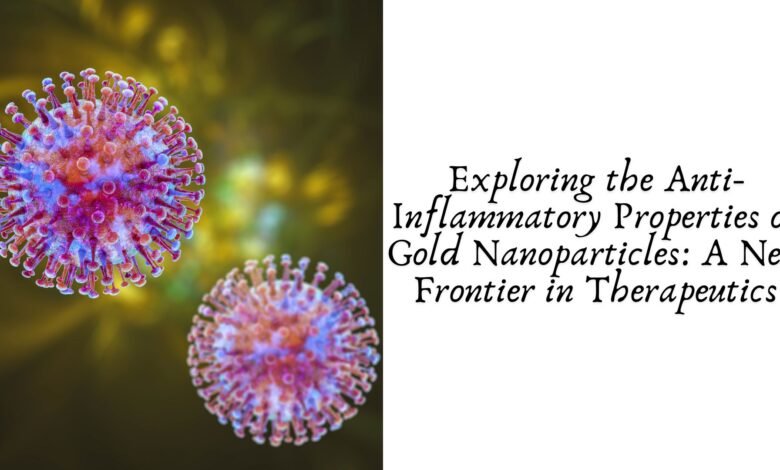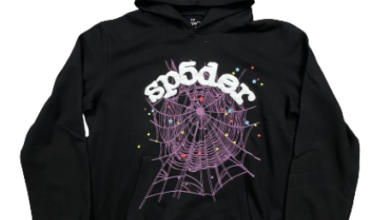Exploring the Anti-Inflammatory Properties of Gold Nanoparticles: A New Frontier in Therapeutics

Introduction
Inflammation is a fundamental biological response to injury, infection, or harmful stimuli. While it’s a crucial part of the body’s defense mechanism, chronic inflammation can lead to various diseases, including arthritis, cardiovascular diseases, and even cancer. The quest for effective anti-inflammatory treatments has driven research into innovative solutions, one of which is the use of gold nanoparticles (AuNPs). These tiny particles, ranging from 1 to 100 nanometers in size, have garnered significant attention for their remarkable anti-inflammatory properties. In this article, we delve into the emerging role of gold nanoparticles in combating inflammation, exploring their mechanisms of action, potential applications, and future prospects in medicine.
Understanding Gold Nanoparticles
Gold nanoparticles are colloidal gold particles that have unique physical and chemical properties, making them ideal for biomedical applications. Due to their high surface area-to-volume ratio, AuNPs can interact with biological molecules at the cellular level, enabling targeted therapeutic interventions. Their biocompatibility, ease of synthesis, and ability to be functionalized with various biological ligands further enhance their appeal in medical research.
Key Characteristics of Gold Nanoparticles:
- Biocompatibility: Non-toxic and safe for use in biological systems.
- Surface Functionalization: Can be coated with proteins, antibodies, or drugs for targeted therapy.
- Optical Properties: Strong surface plasmon resonance, useful for imaging and diagnostics.
- Size and Shape Versatility: Can be synthesized in various shapes (spheres, rods, cubes) and sizes for specific applications.
Mechanisms of Anti-Inflammatory Action
The anti-inflammatory effects of gold nanoparticles have been observed in various in vitro and in vivo studies. These effects are attributed to multiple mechanisms, including:
Modulation of Cytokine Production
Cytokines are small proteins that play a critical role in the immune response, acting as signaling molecules between cells. Inflammatory cytokines like tumor necrosis factor-alpha (TNF-α), interleukin-6 (IL-6), and interleukin-1 beta (IL-1β) are often elevated in chronic inflammatory conditions. Research suggests that AuNPs can downregulate the production of these pro-inflammatory cytokines, thereby reducing inflammation. By inhibiting nuclear factor-kappa B (NF-κB), a key regulator of cytokine production, AuNPs can prevent the overactivation of the immune system.
Reduction of Oxidative Stress
Oxidative stress, characterized by an imbalance between reactive oxygen species (ROS) and antioxidants, contributes to inflammation and tissue damage. Gold nanoparticles have demonstrated antioxidant properties by scavenging free radicals and reducing oxidative stress. This antioxidative action helps in protecting cells from damage and mitigating inflammatory responses.
Inhibition of Inflammatory Enzymes
Enzymes such as cyclooxygenase-2 (COX-2) and lipoxygenase are involved in the synthesis of pro-inflammatory mediators like prostaglandins and leukotrienes. Studies have shown that AuNPs can inhibit the activity of these enzymes, thereby decreasing the production of inflammatory mediators and alleviating pain and swelling.
Immune System Modulation
Gold nanoparticles can influence the function of immune cells, including macrophages, T cells, and dendritic cells. By modulating macrophage polarization towards an anti-inflammatory (M2) phenotype, AuNPs can promote tissue repair and reduce chronic inflammation. Additionally, AuNPs have been shown to suppress the activation of T cells, preventing excessive immune responses that contribute to autoimmune diseases.
Potential Applications in Medicine
The anti-inflammatory properties of gold nanoparticles open up a wide range of therapeutic applications. Below are some of the most promising areas:
Treatment of Arthritis
Arthritis, particularly rheumatoid arthritis, is characterized by chronic joint inflammation. AuNPs have shown potential in reducing joint inflammation and pain by targeting inflammatory pathways. Studies on animal models have demonstrated that gold nanoparticles can alleviate arthritis symptoms, offering a promising alternative to traditional anti-inflammatory drugs, which often have significant side effects.
Cardiovascular Diseases
Chronic inflammation is a major contributor to cardiovascular diseases such as atherosclerosis. Gold nanoparticles can reduce vascular inflammation by targeting endothelial cells and macrophages involved in plaque formation. This can potentially prevent the progression of atherosclerosis and reduce the risk of heart attacks and strokes.
Neurological Disorders
Neuroinflammation is implicated in various neurological disorders, including Alzheimer’s disease, Parkinson’s disease, and multiple sclerosis. The ability of AuNPs to cross the blood-brain barrier and modulate neuroinflammatory responses makes them a promising candidate for treating these conditions. Early research indicates that gold nanoparticles can reduce amyloid-beta plaque formation and protect neurons from inflammatory damage in Alzheimer’s models.
Cancer Therapy
Chronic inflammation is associated with tumor growth and metastasis. Gold nanoparticles, due to their anti-inflammatory and antioxidant properties, can be used as an adjuvant therapy in cancer treatment. By reducing inflammation in the tumor microenvironment, AuNPs can enhance the efficacy of chemotherapy and radiation therapy.
Wound Healing
Inflammation is a key component of the wound healing process. However, prolonged inflammation can impair healing. Gold nanoparticles have been shown to promote wound healing by modulating inflammatory responses, reducing oxidative stress, and enhancing tissue regeneration.
Current Challenges and Future Directions
While gold nanoparticles hold great promise in anti-inflammatory therapy, several challenges need to be addressed before their widespread clinical use:
Safety and Toxicity
Although AuNPs are generally considered biocompatible, their safety profile can vary based on size, shape, surface charge, and concentration. High doses or prolonged exposure to gold nanoparticles may lead to cytotoxic effects, particularly in the liver, kidneys, and spleen. Therefore, extensive in vivo studies are required to determine the optimal parameters for safe therapeutic use.
Targeted Delivery
Ensuring that gold nanoparticles reach the intended site of inflammation without affecting healthy tissues is crucial for their effectiveness. Advances in surface functionalization and the development of targeted delivery systems, such as ligand-coated AuNPs, are essential for enhancing their therapeutic potential.
Long-Term Efficacy
The long-term efficacy and stability of gold nanoparticles in the human body remain areas of active research. Understanding their biodegradation, clearance, and potential accumulation in tissues is necessary to optimize their use in chronic conditions.
Regulatory Approval
The path to regulatory approval for gold nanoparticle-based therapies involves rigorous testing and validation. Regulatory agencies require comprehensive data on their safety, efficacy, and manufacturing processes. Collaborative efforts between researchers, clinicians, and regulatory bodies are needed to streamline this process.
Conclusion
The anti-inflammatory properties of gold nanoparticles present a promising avenue for developing novel therapies for a range of inflammatory diseases. Their ability to modulate cytokine production, reduce oxidative stress, and inhibit inflammatory enzymes positions them as a powerful tool in the fight against chronic inflammation. However, further research is needed to fully understand their mechanisms, optimize their safety, and develop targeted delivery systems. As scientific advancements continue, gold nanoparticles may revolutionize the treatment of inflammation-related conditions, offering hope for patients suffering from chronic diseases.
References
- Huang, X., et al. (2023). “Gold nanoparticles in inflammation therapy: A review.” Journal of Nanomedicine.
- Singh, R., et al. (2024). “Anti-inflammatory mechanisms of gold nanoparticles: Recent insights.” International Journal of Nanotechnology.
- Zhao, Y., et al. (2022). “Modulation of cytokine production by gold nanoparticles in arthritis models.” Journal of Inflammation Research.
This comprehensive exploration highlights the potential of gold nanoparticles in revolutionizing the treatment of inflammatory diseases. With continued research, we may soon see gold nanoparticles become a cornerstone in anti-inflammatory therapy, paving the way for safer, more effective treatments.



